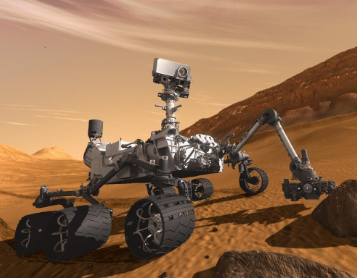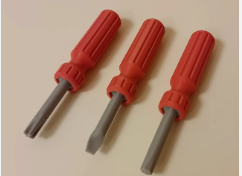The Power of Robotics Education in the 21st Century : A Guide for Parents
The Power of Robotics Education in the 21st
Century: A Guide for Parents
Remember, the sky is not the
limit—Mars is just the beginning!
|
A |
s we zoom into the 21st century, integrating robotics into our education system is no longer just a cool
idea—Our robotics club must aim to turbocharge
students' brains with critical skills through hands-on adventures in
electronics, mechanics, and coding. Imagine students not just learning but
actually interacting with their environment, mastering digital literacy like
pros, and marveling at the wonders of science and technology. Here’s why our
lessons are crucial and how parents can jump on board this exciting journey.
Parents, get ready to support your
budding tech geniuses and watch them transform into the next generation of
innovators!
Why
Robotics Lessons Matter
- Interacting with the Environment:
- Curriculum Objective: Learners will interact with their environment for
learning and sustainable development.
- Lesson Application: Students build and program robots to navigate through
obstacles, simulating real-world environmental interactions.
- Benefit:
Enhances understanding of sustainable practices and environmental
awareness.
- Digital Literacy:
- Curriculum Objective: Apply digital literacy skills for communication,
learning, and enjoyment.
- Lesson Application: Coding activities using Scratch or Blockly help
students learn programming in a fun and engaging way.
- Benefit:
Prepares students for a technology-driven world by developing essential
digital skills.
- Science and Technology Innovations:
- Curriculum Objective: Appreciate the contribution of science and technology
in providing innovative solutions.
- Lesson Application: Projects like modifying robots for specific tasks
encourage innovative thinking.
- Benefit:
Encourages students to think creatively and develop problem-solving
skills.
- Scientific Inquiry:
- Curriculum Objective: Use scientific knowledge to observe and explain the
natural world.
- Lesson Application: Experiments with sensors to measure temperature,
light, and other environmental factors.
- Benefit:
Promotes a deeper understanding of scientific concepts and the natural
world.
- Functional Discoveries:
- Curriculum Objective: Make functional discoveries that impact individuals
and the wider society.
- Lesson Application: Creating prototypes to solve real-world problems.
- Benefit:
Instills a sense of social responsibility and the potential impact of
technology.
Tools
Needed for Safe Home Robotics Activities
To continue their robotics journey
at home, students will need a few basic tools and components. Here are some safe
and essential items:
- Glue Gun:
For assembling robot parts.
- Screwdrivers:
Basic sets for constructing and deconstructing robots.
- Wire Cutters and Strippers: For handling electronic components.
- Breadboards and Wires: For building simple circuits.
- LEDs:
For various experiments and projects.
Holiday
Activities to Explore Technology in Kenya
Parents can enhance their children's
learning experience by taking them to places where they can explore technology
and innovation:
- Kenya National Museum (Nairobi):
- Bomas of Kenya (Nairobi):
- Nairobi Railway Museum
- Kenya Science and Technology Park (Konza City): A hub for technological innovation and learning.
- Nairobi Techno Hub:
Interactive sessions and workshops for kids.
Safety
Measures for Home Robotics Activities
While engaging in robotics projects
at home, it's crucial to ensure safety. Here are some tips:
- Supervision:
Always supervise children when using tools like glue guns and soldering
irons.
- Proper Equipment:
Ensure they use safety goggles and gloves when necessary.
- Clean Workspace:
Maintain a clean and organized workspace to prevent accidents.
- Fire Safety:
Keep a fire extinguisher nearby and ensure kids know how to use it.
- Storage:
Store tools and components safely when not in use.
Exciting
Robotics Project: M-Robot for Mars Simulation.
Don't forget to think about the
M-Robot we are designing to simulate the Mars environment on Earth. This
project is inspired by the growing advancements in space exploration and aims
to provide students with a unique learning experience. As we work on this
project, students will develop critical thinking, problem-solving, and
innovative skills that are essential for future technological challenges.
Conclusion
Robotics education is an integral
part of the modern curriculum, providing students with the skills and knowledge
needed for the future. Parents play a vital role in their children's development by supporting their learning journey and providing opportunities for exploration. Let's work together to inspire the next generation of innovators
and problem solvers.
Remember, the sky is not the
limit—Mars is just the beginning!
N:B
Observation is a
fundamental component of the learning process, playing a vital role in
enhancing our understanding and skills. Through careful observation, we can
identify patterns and trends that may not be immediately apparent, enabling us
to make more informed decisions and predictions. It offers valuable insights
into how things function, which can lead to more effective problem-solving and
innovation. Additionally, observing others allows us to learn new techniques
and refine our own methods, particularly in skill-based learning where
precision is key. By understanding the context in which events occur,
observation helps us grasp the full picture and apply knowledge more
effectively. Furthermore, it fosters critical thinking by challenging our
assumptions and encouraging a more nuanced perspective. Ultimately, observation
is not just a passive activity but an active and essential part of deepening
our learning experience.








Nice
ReplyDeleteThanks
DeleteKeep it up
ReplyDelete